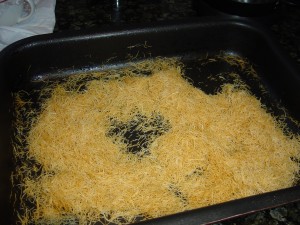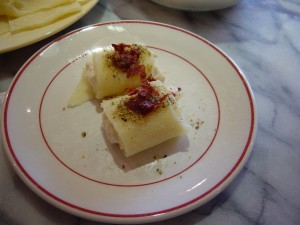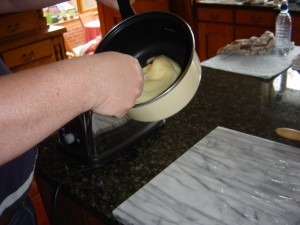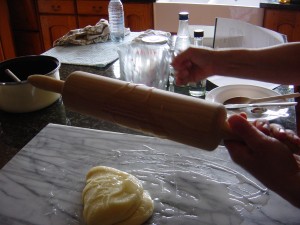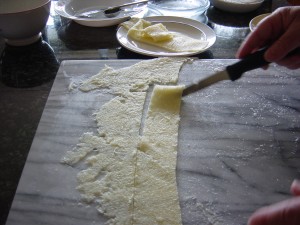It is an authentic Lebanese dish, quite suitable for the sharp chill of autumn. The burghul is added last thus allowing lamb meat, chickpeas, onions and spices to mingle together. This in fact is what gives it such a distinctive taste.
Serves 4
Ingredients.
- 120g / 4½ oz chick peas soaked overnight in water with ½ tsp of bicarbonate of soda. Alternatively, use tinned chickpeas.
- 1 tbsp vegetable oil
- 550g / 1¼ lb lamb neck fillet (or any lean part) cut into large cubes
- 3 medium onions quartered or the equivalent amount of shallots
- 2 cinnamon sticks 6.5cm /2½ inches long each
- 1.5 litres / 2½ pints water
- 275g /10 oz coarse bulgar wheat / burghul
- Salt &freshly milled black pepper
- 1 ½ tsp ground allspice
- 450g / 1lb plain yoghurt to serve
Method.
- Rinse chickpeas with fresh water, transfer into a large saucepan (large enough to take at later stage the meat – onions mixture), cover with water (3 times their amount) and add 1 tsp of salt. Using a high heat setting, bring to the boil removing any scum, then reduce the heat, cover and simmer for half an hour checking occasionally.
- While chickpeas are cooking, heat up the oil in another non stick saucepan or deep frying pan and brown the meat to seal it, season with freshly milled black pepper, then stir in the onions and sauté for 1 minute. Now transfer the mixture onto a plate covered with kitchen paper to drain excess fat.
- By that stage the chickpeas should have been boiling for half an hour or a little over, a time suitable to add the meat-onions mixture. Top up with some boiling water, increase the heat and boil for 5 minutes, check whether any scum needs removing, then reduce the heat. Give everything a good stir and simmer for 50 minutes or until both chickpeas and meat are done and the cooking liquid is reduced to about 650ml / 1 pint 2 fl oz.
- Discard cinnamon sticks, season with allspice, taste the sauce and adjust seasoning if necessary. Add in the burghul, give it a good stir and let it simmer gently until the burghul is cooked and the liquid is absorbed. It takes roughly 15-20 minutes, the burghul should be swollen and tender.
- Let it stand covered for 5 minutes before serving. Some cooks prefer to cover the pan with a kitchen towel to absorb the steam and achieve a perfect texture.
- Serve hot topped with well chilled yoghurt, as the contrast of hot versus cold gives this dish an unusually succulent taste.
At home, mother used to serve this dish with an additional side one: Beetroot Salad (Salatit Shmandar: See Salads Section) which I think works well.
Facts. Did you know?
- Bulgar wheat or burghul is high in fibres and carbohydrate and low in fat.
- It is rich in “B” vitamins, iron, phosphorous and manganese.
Find out more on: http://www.sunnylandmills.com/health.html

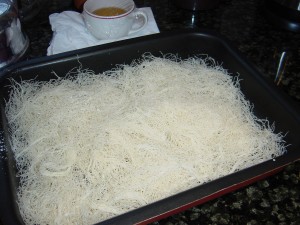 Uncooked Shredded Pastry
Uncooked Shredded Pastry